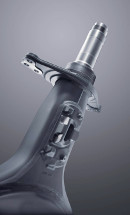
The use of laser welding of automotive powertrain components is gaining momentum. Its advantages are weight, space and material savings compared to traditional assembly techniques. Due to its low-heat input attribute, laser welding provides nearly distortion-free welding at a high speed compared to other welding technologies.
This webinar gave an overview of a number of processes and production solutions to overcome existing challenges, along with guidelines defining realistic limits for these parameters.
 This webinar was presented by:
This webinar was presented by:
Oliver Müllerschön
Oliver Müllerschön started his career in the R&D department of TRUMPF in Germany. He spent several years in the sales department of TRUMPF laser technology as a manager for CO2 and solid state high-power lasers. Now in the industry management automotive area of TRUMPF, he is responsible for powertrain applications worldwide.
Hakan Kendirci
Hakan Kendirci started in the training department of TRUMPF in 2007 and worked for several years as a trainer for laser cutting and punching technologies. Since 2012 he has been based in the automotive group at TRUMPF and is chiefly responsible for powertrain laser applications worldwide.
The TRUMPF Group ranks among the leading manufacturing companies worldwide. In the field of industrial lasers and laser systems, the company is the global technological leader. With 60 subsidiaries and branch offices, the Group is represented in almost every European country, North and South America as well as in Asia. As the world’s leading provider of laser manufacturing technology, TRUMPF is the one-stop shop for all auto manufacturers and suppliers seeking cost-efficient, high-speed, top-quality solutions for their production requirements: starting with laser systems and extending through beam sources, beam guidance, optics and numerical control, to all inclusive service and support.
























